
Senior physics writer Emily Conover joined Science News in 2016. She has a Ph.D. in physics from the University of Chicago, where she studied the weird ways of neutrinos, tiny elementary particles that can zip straight through the Earth. She got her first taste of science writing as a AAAS Mass Media Fellow for the Milwaukee Journal Sentinel. She has previously written for Science Magazine and the American Physical Society. She is a two-time winner of the D.C. Science Writers’ Association Newsbrief award, and a winner of the Acoustical Society of America’s Science Communication Award.

Trustworthy journalism comes at a price.
Scientists and journalists share a core belief in questioning, observing and verifying to reach the truth. Science News reports on crucial research and discovery across science disciplines. We need your financial support to make it happen – every contribution makes a difference.
All Stories by Emily Conover
-
 Quantum Physics
Quantum PhysicsPhysicists smash particle imitators
A new quasiparticle collider smashes together the faux-particles that appear in solid materials.
-
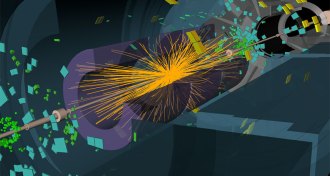 Particle Physics
Particle PhysicsLarge Hadron Collider starts its 2016 physics run
Experiments at the Large Hadron Collider are taking data for the first time in 2016.
-
 Quantum Physics
Quantum PhysicsCommunicating covertly goes quantum
Researchers are working to make quantum messages that are undetectable.
-
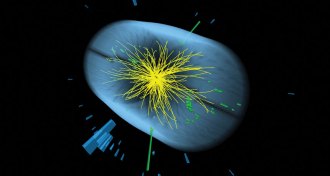 Particle Physics
Particle PhysicsTheorists perplexed by hints of unexpected new particle
Hints of a potential new particle at the LHC have scientists excited, and theoretical physicists are beginning to converge on explanations.
-
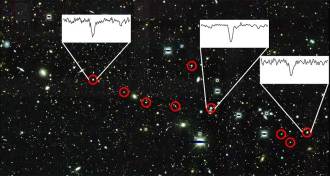 Cosmology
CosmologyAncient dwarf galaxy was heavy-element factory
A rare event in an ancient galaxy left traces of heavy elements in its stars.
-
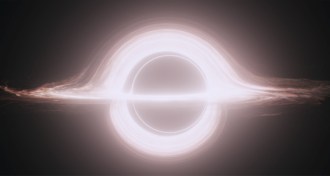 Cosmology
CosmologyHow to make gravitational waves ‘sing’
A rapidly spinning black hole would make a unique pattern of gravitational waves when it sucks in a smaller companion.
-
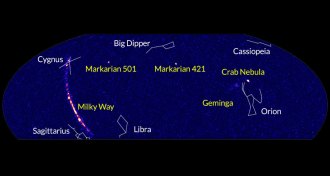 Cosmology
CosmologyNew sky map charts previously unknown gamma-ray sources
A new map of the sky from the High-Altitude Water Cherenkov Observatory charts the cosmic origins of high-energy photons.
-
 Quantum Physics
Quantum PhysicsInformation is physical, even in quantum systems, study suggests
A thermodynamic principle says that deleting information generates heat, and now, scientists say that goes for quantum systems, too.
-
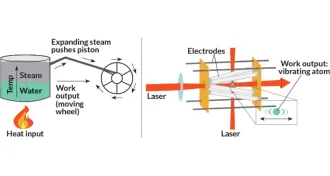 Physics
PhysicsItty bitty engine puts a single atom to work
Scientists have created a miniature heat engine out of a single atom.
-
 Quantum Physics
Quantum PhysicsGamers outperform computer at quantum task
Quantum mechanics may be weird, but a new video game shows that human intuition can still best computers at quantum tasks.
-
 Physics
PhysicsTurning water to steam, no boiling required
A new material can convert water into steam with sunlight alone, and could be useful for making fresh water from salty.
-
 Astronomy
AstronomyPossible source of high-energy neutrino reported
Scientists may have found the cosmic birthplace of an ultra-high energy neutrino: a blazar 9 billion light years away.